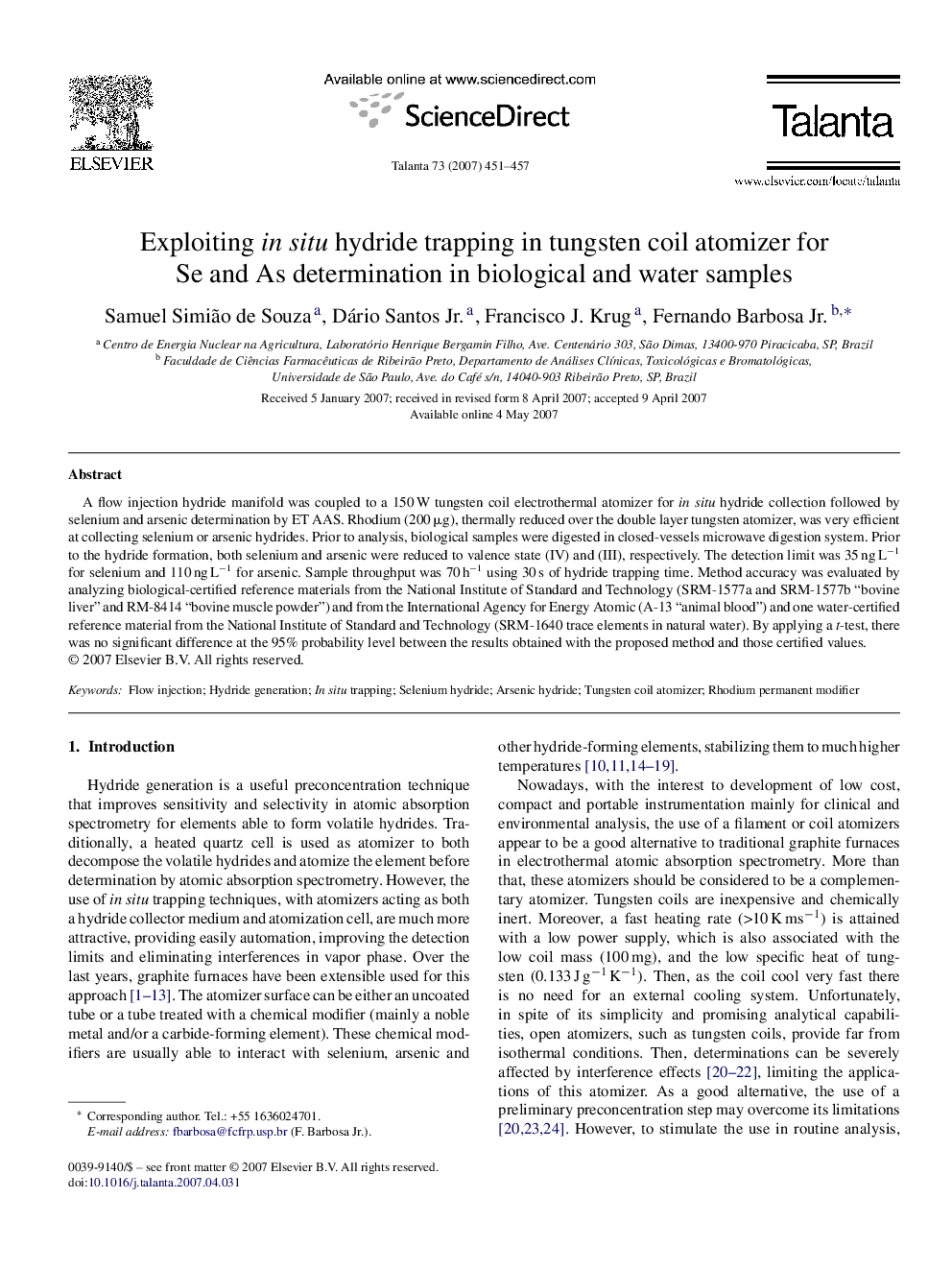| Article ID | Journal | Published Year | Pages | File Type |
|---|---|---|---|---|
| 1247206 | Talanta | 2007 | 7 Pages |
A flow injection hydride manifold was coupled to a 150 W tungsten coil electrothermal atomizer for in situ hydride collection followed by selenium and arsenic determination by ET AAS. Rhodium (200 μg), thermally reduced over the double layer tungsten atomizer, was very efficient at collecting selenium or arsenic hydrides. Prior to analysis, biological samples were digested in closed-vessels microwave digestion system. Prior to the hydride formation, both selenium and arsenic were reduced to valence state (IV) and (III), respectively. The detection limit was 35 ng L−1 for selenium and 110 ng L−1 for arsenic. Sample throughput was 70 h−1 using 30 s of hydride trapping time. Method accuracy was evaluated by analyzing biological-certified reference materials from the National Institute of Standard and Technology (SRM-1577a and SRM-1577b “bovine liver” and RM-8414 “bovine muscle powder”) and from the International Agency for Energy Atomic (A-13 “animal blood”) and one water-certified reference material from the National Institute of Standard and Technology (SRM-1640 trace elements in natural water). By applying a t-test, there was no significant difference at the 95% probability level between the results obtained with the proposed method and those certified values.
